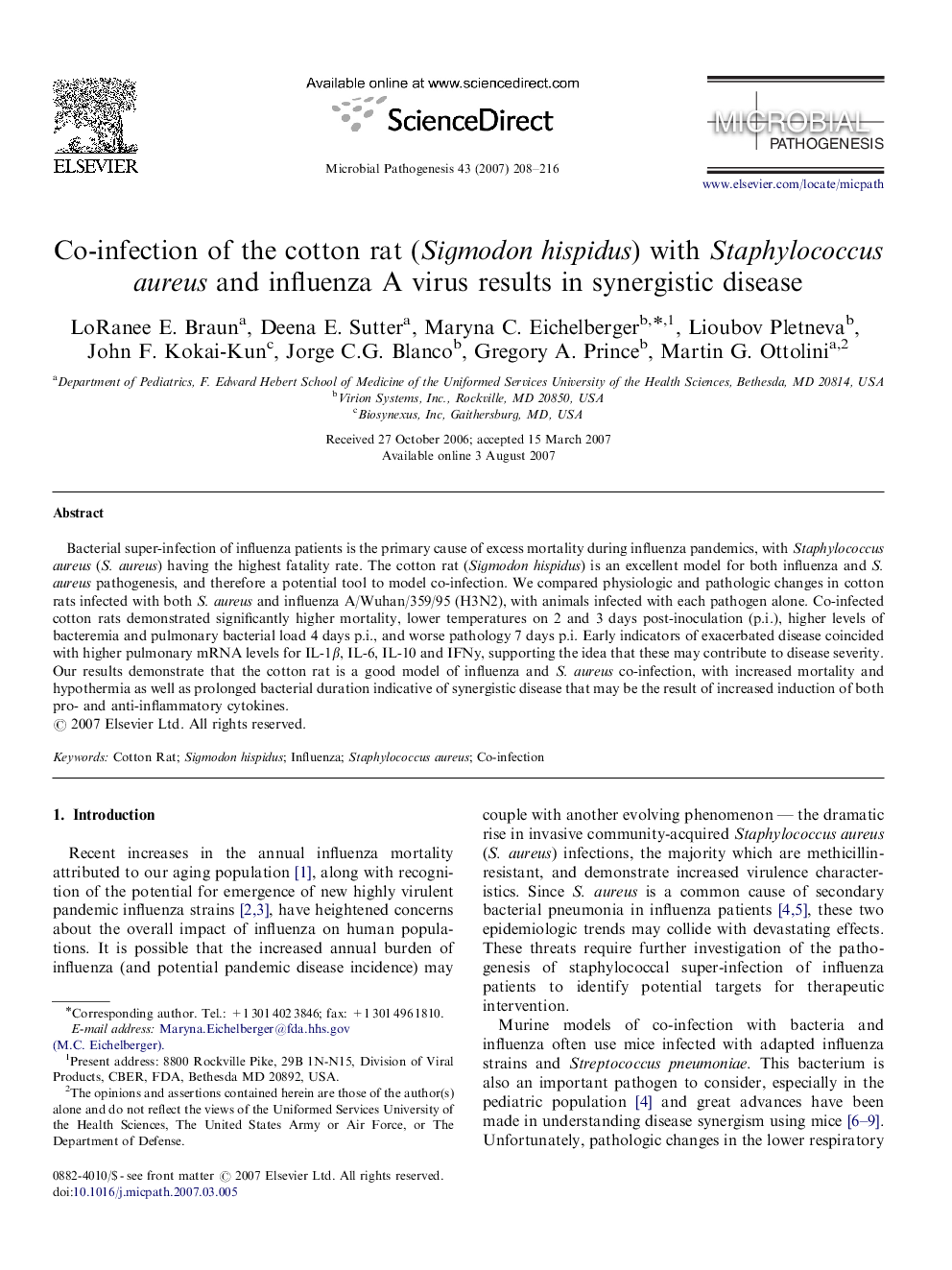| Article ID | Journal | Published Year | Pages | File Type |
|---|---|---|---|---|
| 3417258 | Microbial Pathogenesis | 2007 | 9 Pages |
Bacterial super-infection of influenza patients is the primary cause of excess mortality during influenza pandemics, with Staphylococcus aureus (S. aureus) having the highest fatality rate. The cotton rat (Sigmodon hispidus) is an excellent model for both influenza and S. aureus pathogenesis, and therefore a potential tool to model co-infection. We compared physiologic and pathologic changes in cotton rats infected with both S. aureus and influenza A/Wuhan/359/95 (H3N2), with animals infected with each pathogen alone. Co-infected cotton rats demonstrated significantly higher mortality, lower temperatures on 2 and 3 days post-inoculation (p.i.), higher levels of bacteremia and pulmonary bacterial load 4 days p.i., and worse pathology 7 days p.i. Early indicators of exacerbated disease coincided with higher pulmonary mRNA levels for IL-1β, IL-6, IL-10 and IFNy, supporting the idea that these may contribute to disease severity. Our results demonstrate that the cotton rat is a good model of influenza and S. aureus co-infection, with increased mortality and hypothermia as well as prolonged bacterial duration indicative of synergistic disease that may be the result of increased induction of both pro- and anti-inflammatory cytokines.
